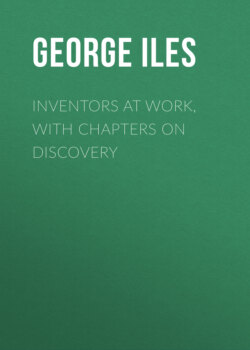Читать книгу Inventors at Work, with Chapters on Discovery - George Iles - Страница 41
На сайте Литреса книга снята с продажи.
Total Reflection in Binocular Glasses.
ОглавлениеTable of Contents
In the Zeiss Works at Jena, in Germany, optical instruments of the highest excellence are manufactured; many of these take advantage of the principle of total reflection we have been considering. When the task was assumed of producing a new and improved telescope, it was observed that an ordinary telescope, built up of lenses, is inconveniently long and heavy in comparison with its magnifying power. The question arose whether it was possible to construct short instruments of a magnifying power of four to twelve diameters. Porro, an Italian, about the middle of the nineteenth century suggested totally reflecting prisms so placed that while the total travel of a ray would be the same as in an ordinary telescope, the two ends of the luminous path would be near together, while the whole would be more effective than if four mirrors were employed. His idea may be represented by a wire one meter long so bent that its ends are much less than one meter apart. In an illustration of a field-glass as manufactured at the Zeiss Works, on the Porro principle, it will be remarked that the entering ray passes through lenses which are farther apart than the lenses which form the eye-pieces. Thus a much wider field is viewed than that of an ordinary glass, while as the two images received from the two eye-pieces differ more than those observed in direct vision, the perception of depth is increased in a notable degree. This construction is adapted to sporting, marine, and opera-glasses, as well as to field-glasses.
How a wire may be shortened while its original direction is resumed.
Four mirrors, 1, 2, 3, 4, reflect a ray in a line parallel to its original path.
Prisms for Zeiss binocular glasses.
